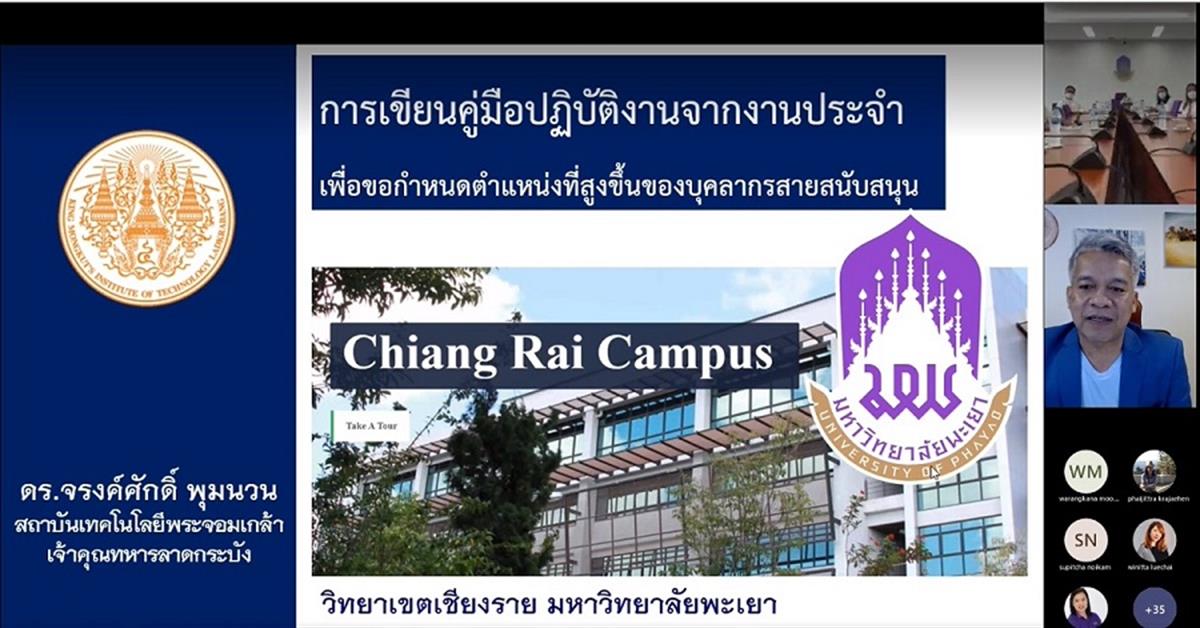
Workforce Development
For a workplace to gain success and prosperity largely depends on the capabilities of its workforces. Chiang Rai Campus, fully realized this fact, thus organized a series of workshops on how to write work manual for all supporting staff members. The expected result was threefold: 1) to allow all staff members to reflect on the effectiveness of their respective work, 2) to have each of them write a work manual in ways that their colleagues can, if needed, perform the work in place of them, and 3) to prepare all of them to advance in their career, particularly after they have gone through the analysis and synthesis process of producing a work manual of their own.
The series of workshops on how to effectively write work manual for Chiang Rai Campus supporting staff members started on November 11, 2021. At the opening ceremony, Associate Professor Dr. Tipchan Wongchanta, Director, stressed the significance of having work manual for everyone so that they can work with clear understanding and direction. Equally important, their colleagues can work in their place whenever needed. Having a good and clear workflow to follow also helps the organization to have the same work standard and result, regardless of who does it.
Chiang Rai Campus received an honor from Dr. Jarongsak Pumnuan, Scientist, Senior Professional Level, from King Mongkut’s Institute of Technology Ladkrabang, and Editor of the Academic Journal, Council of University Administrative Staff of Thailand, to conduct the workshops online, as a result of the wide spread of COVID pandemic.
The content of the work manual was divided into 5 sections:
Section I: Introduction
This section touches upon history, objectives, expected results, framework of the work manual, and definition of words.
Section II: Organization and Responsibilities
Key concepts of this section include organization chart, assigned roles and responsibilities of personnel.
Section III: Rules and Regulations
This section explains rules, regulations, directives, standards, concepts, theories, as well as analysis of work.
Section IV: Work Techniques
Flow Chart, work descriptions/strategies, work standard, case studies, and work ethics make up for this section.
Section V: Problems and Suggestions
This section details problems at work, ways to solve the problems, and suggestions for future development.
As a result, the workshops enabled each of the supporting staff members of Chiang Rai Campus to produce their own work manual, 7 manuals in total. Besides, 64 supporting staff members from schools, units, and divisions of University of Phayao benefited from the workshops.
Tag: #Educational
